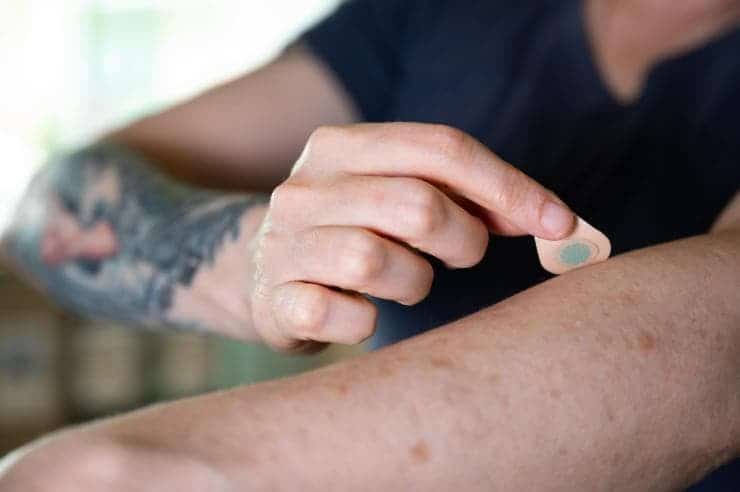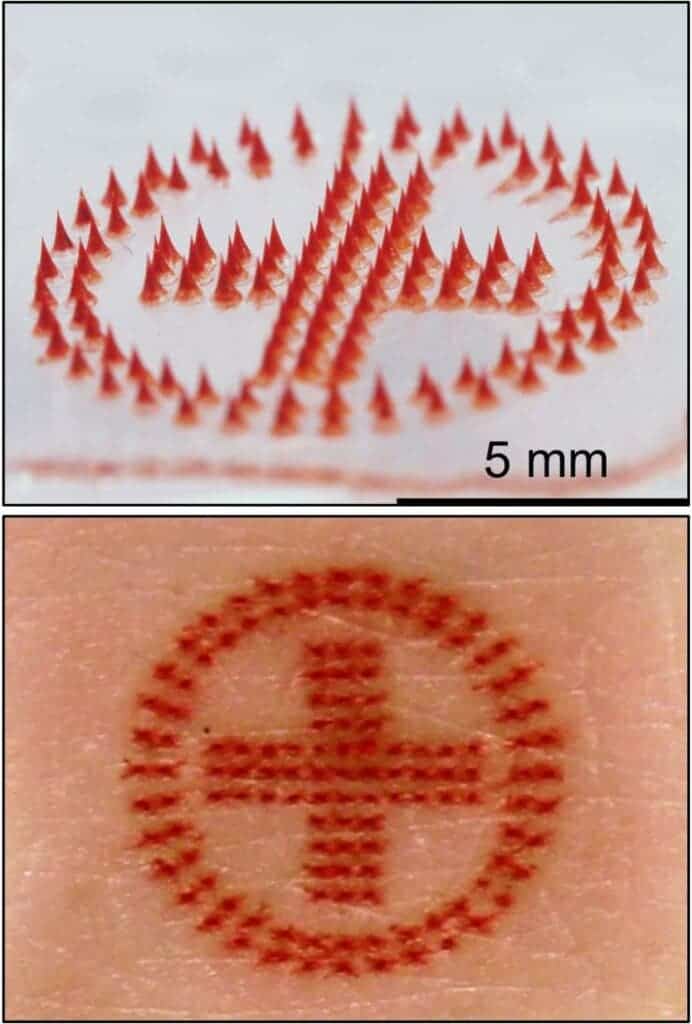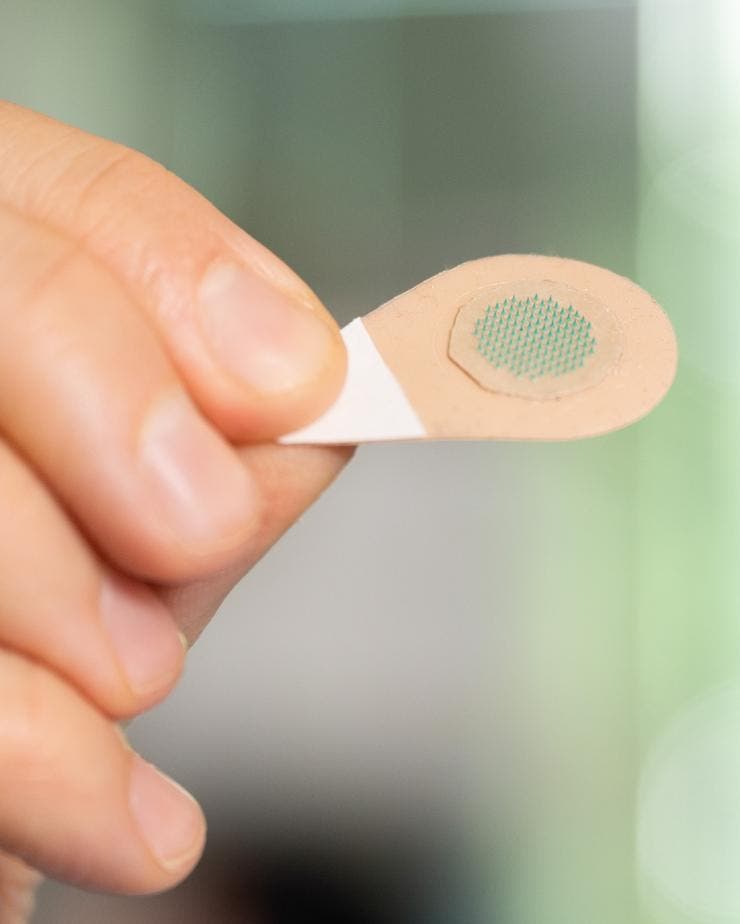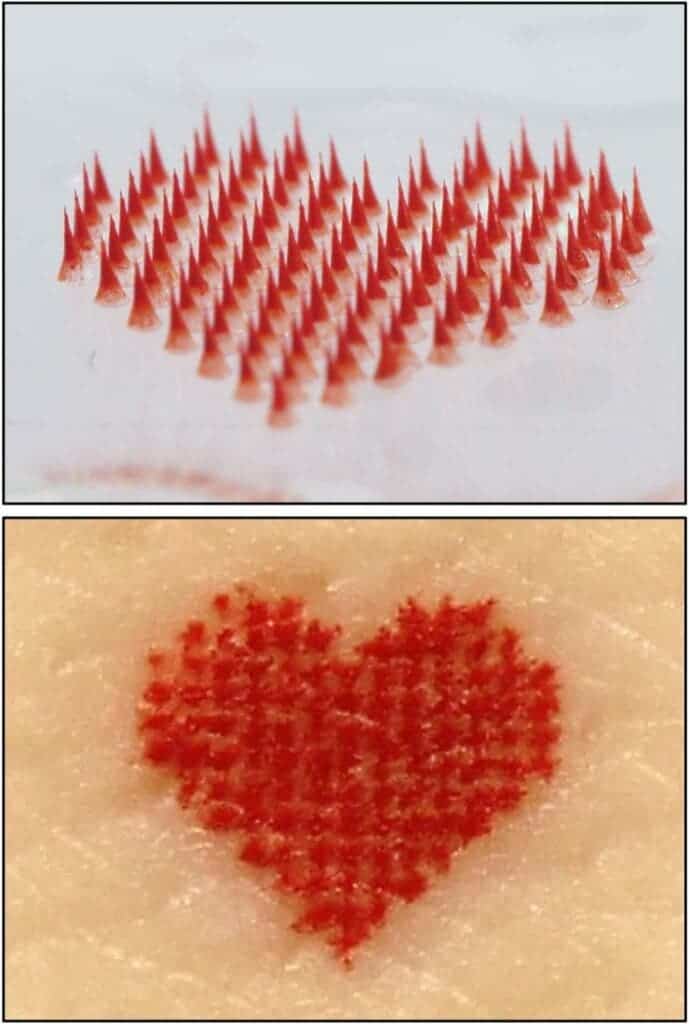
Lots of people love tattoos but loathe the idea of sitting on a chair in excruciating pain for hours at a time. But perhaps, in the future, getting a tattoo would no longer be the agonizing experience it is today.
Repurposing microneedle technology initially designed for delivering vaccines, researchers at the Georgia Institute of Technology have developed a low-cost, painless, and bloodless tattoo that can be used by anyone, with no medical or art training, for that matter, required. You just have to peel off the patch and apply it onto the skin.
“We’ve miniaturized the needle so that it’s painless, but still effectively deposits tattoo ink in the skin,” said Mark Prausnitz, principal investigator on the new study. “This could be a way not only to make medical tattoos more accessible, but also to create new opportunities for cosmetic tattoos because of the ease of administration.”
Painless tattoos: is it really possible?

The microneedles developed by Prausnitz and colleagues are smaller than a grain of sand and contain tattoo ink encased in a dissolvable matrix. Because the microneedles themselves are essentially made of tattoo ink, the deposition of the ink into the skin is very efficient, fast, and painless in only a few minutes.
To make the self-administered tattoo patch, the researchers first started off with a mold of the pattern that forms the desired image etched on the skin, such as a cross or heart symbol. Each microneedle represents a pixel, which can be arranged to form shapes and patterns. The images etched in the demonstrations are basic, but theoretically, you could ink pretty complex shapes by making the needles even smaller thereby enhancing the resolution of the etched dots.

A year after applying the patches to skin samples, the microneedle tattoos were still visible and are likely to be permanent. The researchers even made patches that are sensitive to environmental factors such as light or temperature. These tweaked tattoos, for instance, could only become visible in the presence of ultraviolet light or high temperature.
“Because the microneedles are made of tattoo ink, they deposit the ink in the skin very efficiently,” co-author and former Georgia Tech postdoctoral fellow Song Li said in a statement.
From vaccines to tattoos

The Georgia Tech researchers had been researching microneedles to administer vaccines more conveniently for years when they were approached to start a new research project that would involve using tattoos to identify spayed and neutered dogs and cats. But they quickly realized the same technology could be transferred to people too.
“The goal isn’t to replace all tattoos, which are often works of beauty created by tattoo artists,” Prausnitz said. “Our goal is to create new opportunities for patients, pets, and people who want a painless tattoo that can be easily administered.”
Besides cosmetic purposes, these microneedle tattoos could be used to encode information in the skin of animals, a painless and more discreet method than applying ear tags. The tattoos — which can also be designed to be temporary — can also be used in medical applications for humans, from medical alerts to supplying drugs for treatment.
The findings appeared in the journal iScience.






